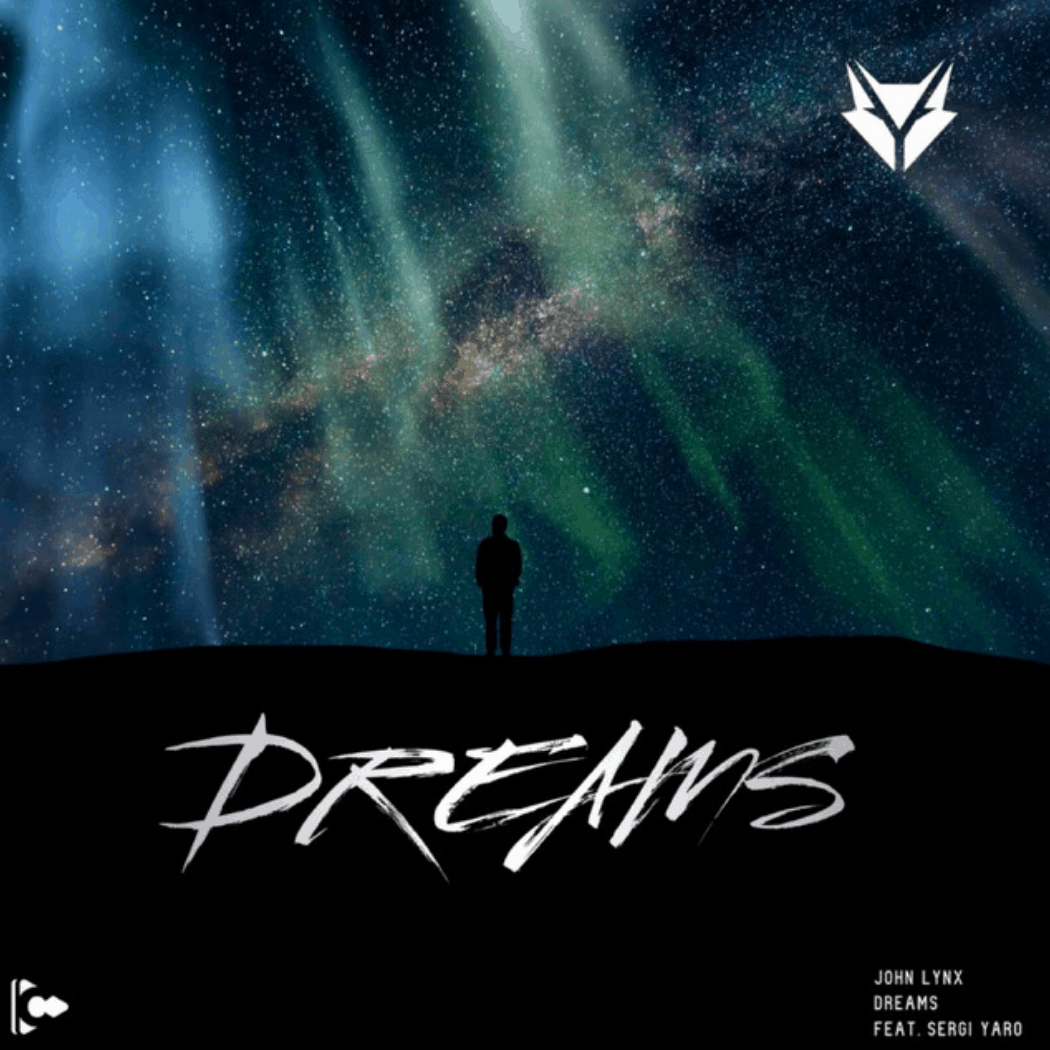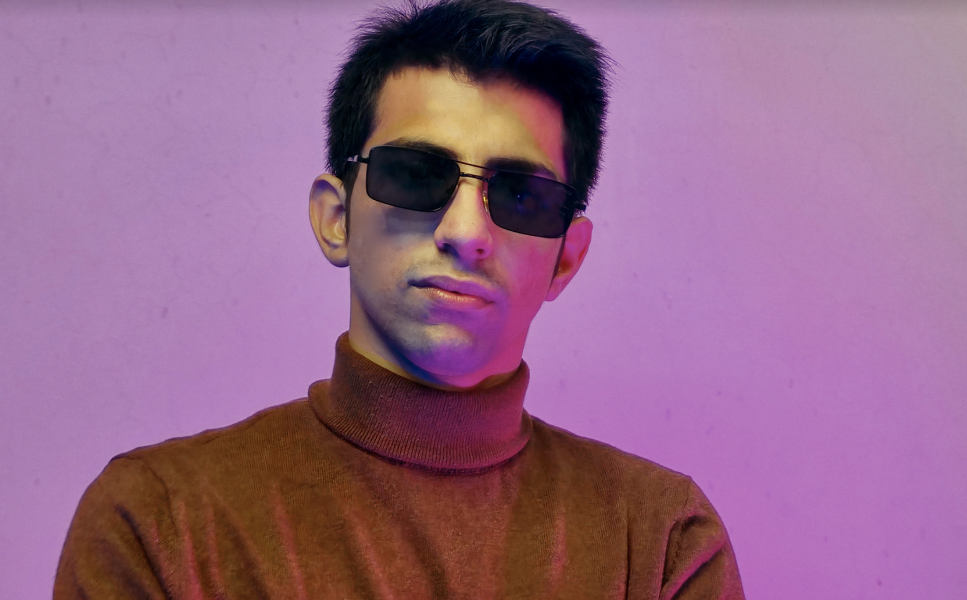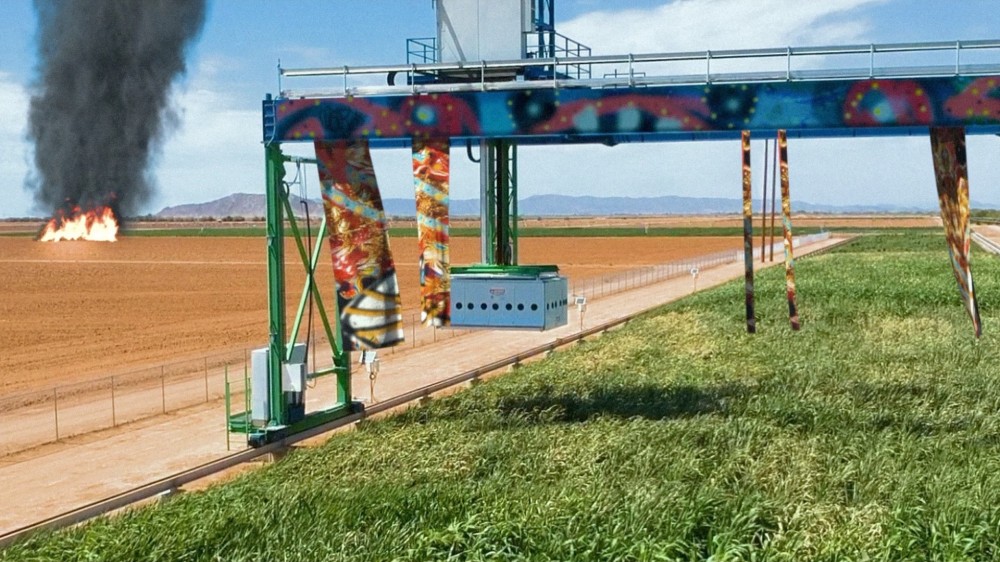
Actual Objects Presents: Solstice
Fact is proud to present the world premiere of Solstice, a speculative documentary, directed by Case Miller, exploring humanity’s future relationship to agriculture through four contemporary harvest rituals.
Though there might not be any obvious crossover between Actual Objects’ dense hallucination of a music video for Yves Tumor’s ‘Jackie’ and their speculative documentary, Solstice, both projects are engaged in exactly the same things, just on wildly different scales. Beneath the arch fantasy of Jackie is an intricate interplay of different technologies in a dynamic, layered system, both visually, in the form of a fantastical landscape through which physical-digital hybrid avatars move, and systemically, in the patchwork of technologically advanced and traditional techniques by which this world is rendered. For the team at Actual Objects, these systems exist in the same space. Neither has primacy over the other, a series of GANs making up a deep fake is as much a narrative device as the interaction between two characters, or a sequence of well-wrought dialogue. In Jackie, this exploration of interconnected technological, social and aesthetic systems takes place within the self-contained framework of a relationship, equal parts psychosexual drama and sci-fi sword fight. In Solstice, director Case Miller expands this engagement with systems to a planetary scale, focusing in on humanity’s current and future relationship with agriculture and food production across four contemporary harvest rituals.
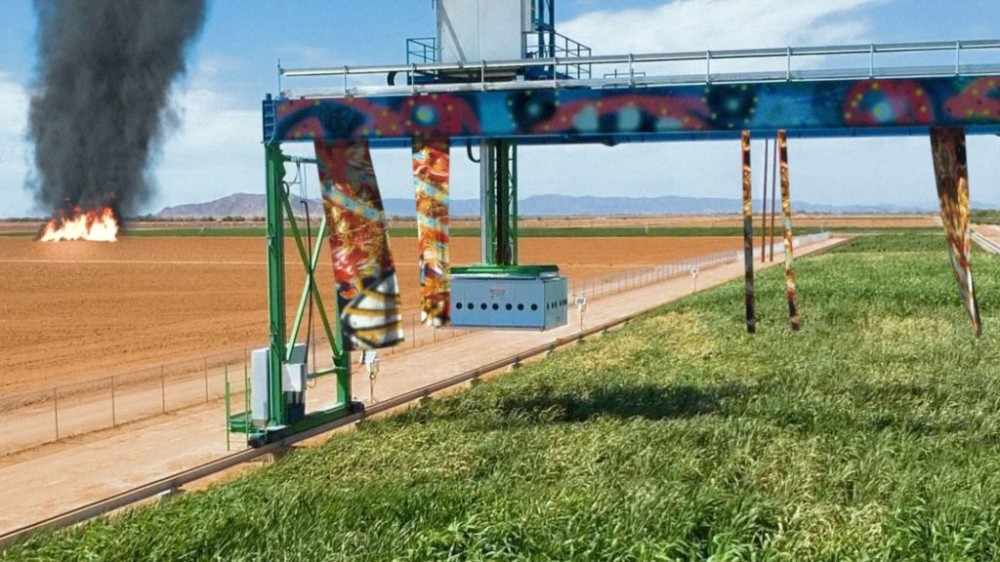
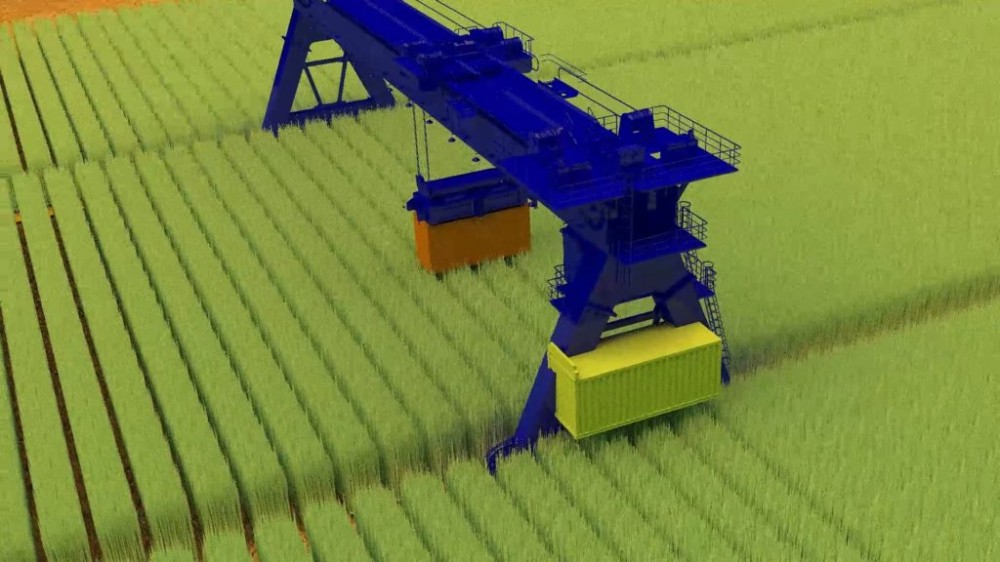
“It’s basically working off a very well known provocation in the greater foresight community, which is my other day job, of trying to understand, at a systems level, how large interconnected geo-engineering projects are going to play out in the face of multiple pressures,” explains Miller. “Climate change is the big one, but also population increase, combined with energy systems, all that stuff.” Divided into four chapters, Solstice, Asado, Mayday and Ash Wednesday, the film seamlessly merges documentary-style footage with motion graphics and CGI to take a closer look at four key, in-development projects that address rapidly encroaching climate catastrophe and the effects this will have on global food production. “The initial inspiration for Solstice came from this weird diagram that the UN put out that talked about how food systems on the planet need to double production, even though we’re only going to jump up by about 2 billion,” continues Miller. “There’s some sort of critical mass that’s happening in food production and how we are going to solve that is still a big question that is often on the table. The way in which we decided to explore this problem of food production was through agricultural ritual, essentially: could we use that as a vehicle to start to explore not only the changing of growing seasons, but the implications of new technologies, both in the field and in the lab and the process of automation and our relationship with labor in that sphere?”
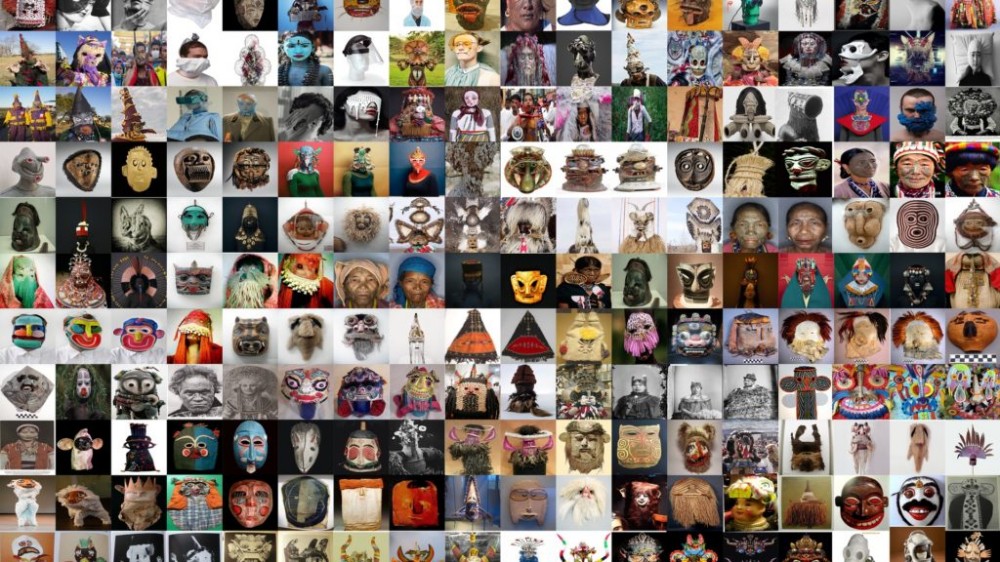
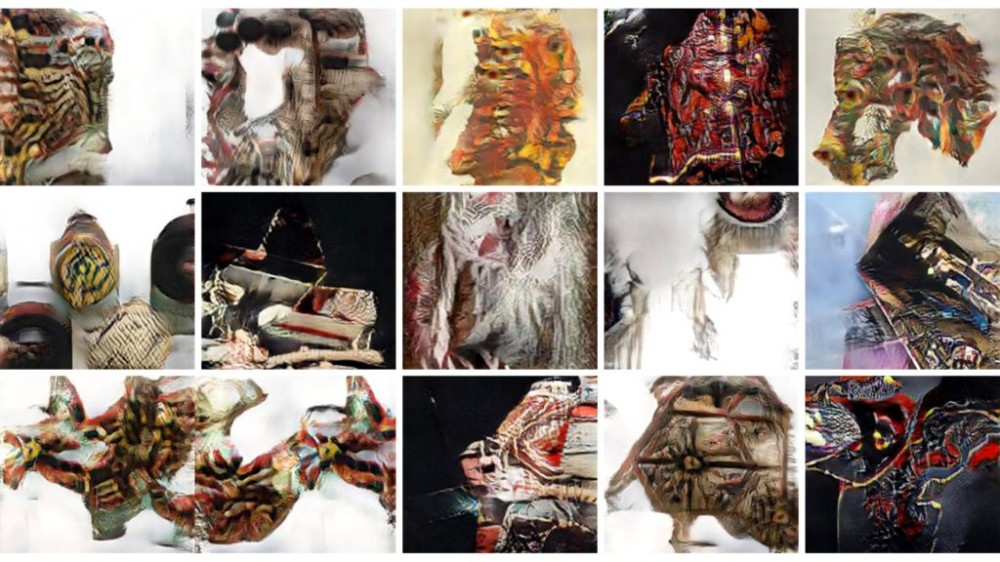
Drone footage of a giant phenotyping robot is set against a conversation between the film’s narrator and an unseen scientist. Though their conversation moves into the theoretical, a discussion concerning the functionality of a sundial based on Berlin-based philosopher Yuk Hui’s thesis on cosmology, the robot, tasked with building a genetically-modified sorghum grain to be drought and desertification-resistant, though computer-generated, is based on a very real project taking place in Arizona. Coupled with imagery adapted from Slavic solstice ritual, during which people jump over a fire on the longest night of the year, the sequence draws together tradition and rapid technological advancement, both of the agricultural practices necessary in a world that’s only getting hotter and of the rituals surrounding said practices. According to Hui, both would constitute a kind of technology and as our technologies evolve, so too does plant life. A similar symbiosis is observed in the “Corporate Vertical Farm / Capture Facility” featured in the Ash Wednesday section of film, which is also based on facilities that exist today across the world. Miller tells me that all of the Sunshine-esque satellite footage featured in Mayday, which depicts a collectively owned satellite system launched by workers to monitor crops around the globe, is adapted from hyperspectral agriculture satellite imagery, technology that is currently being rented to farmers in India.
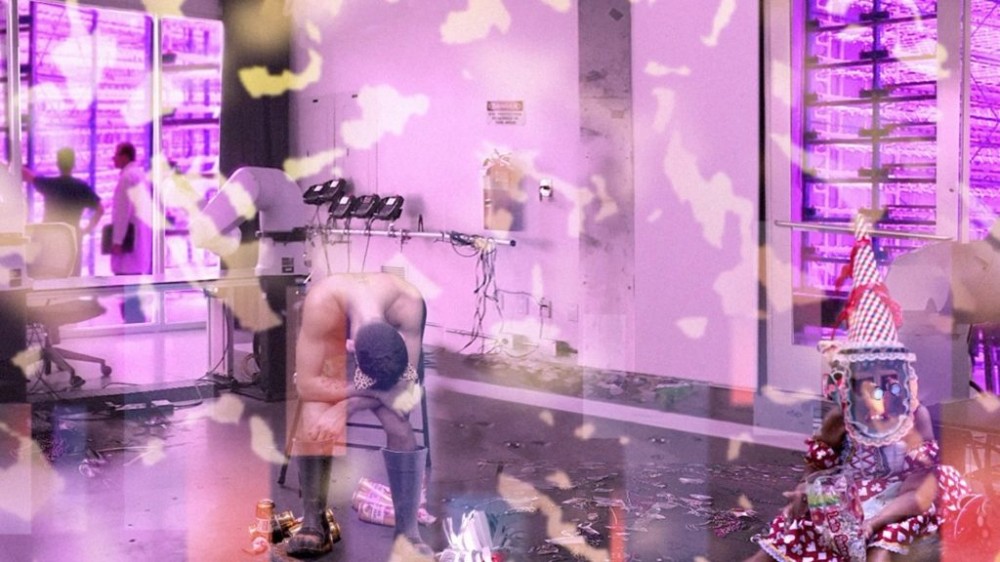
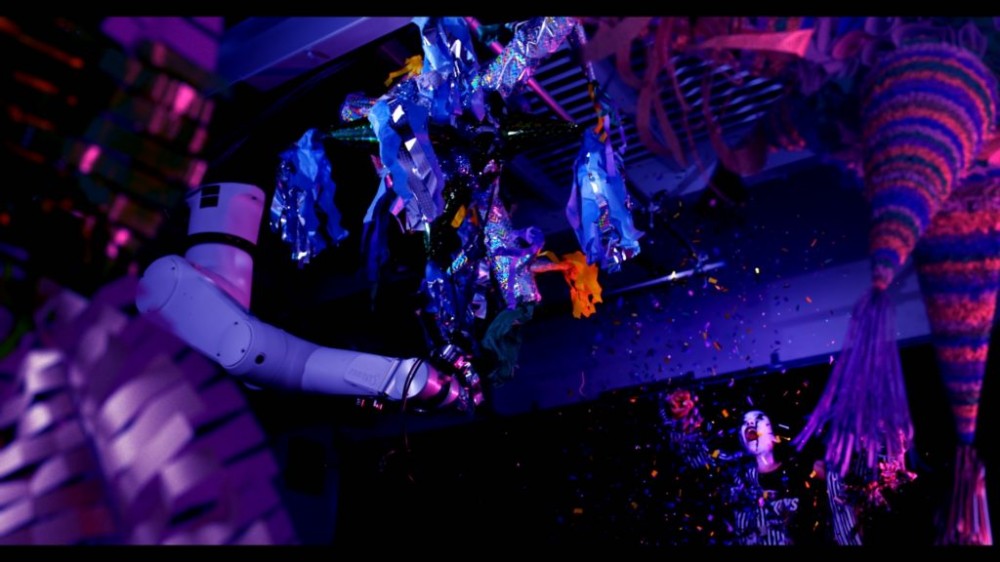
Even in the instance of Asado, named after the south American tradition of communal barbeque and perhaps the closest the film strays to David Cronenberg body horror, Enriqueta, the cow with “el mejor sabor”, is an absurdist extension of current culinary trends. “Although it is extremely contested you can get in-vitro grown protein in restaurants in Los Angeles,” notes Miller. Taking as its premise the notion that the government of Argentina outlaws meat for the purposes of sustainability, Asado depicts the persistence of Argentina’s ranching culture, the cultural bonds between gaucho (cowboy) and his livestock remaining intact even as the production of beef moves off the ranches and into the laboratories. Therein lies the love Asado’s protagonist has for Enriqueta, not simply for her taste, but as part of the ritual that remains centered around her. In each case, real world technology is represented digitally, as computer-generated visuals, a subtle dissonance that serves as one of the central conceits of the film. “The question of whether this is science fiction or speculative fiction is part of the point of the project,” adds Rick Farin. “This stuff is happening right now and it’s not necessarily something that people are aware of. That’s where the rituals come into play, as a way for us to try to relate to and understand these technologies and understand how the world is changing.”
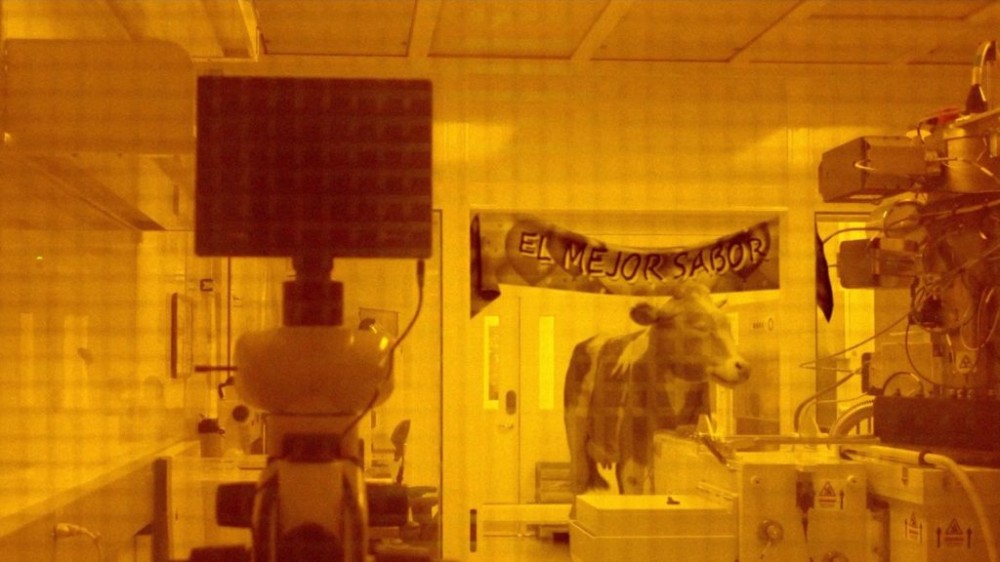
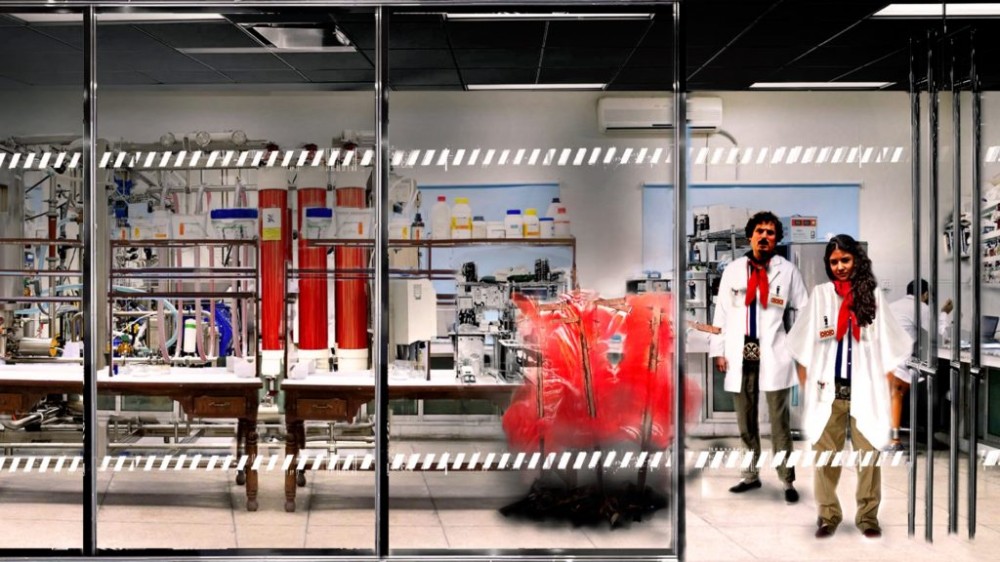
At the film’s climax we witness a confluence of ritual and technology that seeks answers to questions that, during a time of Covid and Brexit-induced food and fuel shortages, seem particularly prescient. Within the scope of human ritual and religion, how will feast days take place in a world with not enough food to feed its inhabitants? If the answer is automation, will machines need to appreciate the cultural significance of seasonal change, agricultural practices and culinary traditions? In a world where food production is fully automated, what does humanity’s relationship with nature even look like? “It’s about the deconstruction of the bucolic,” posits Miller, “leaving behind this antiquated binary, human and nature. It’s about starting to understand that we are part of nature, these things that we make are all part of nature and that the solution to it is not to extract the two, but to understand the intermingling of it, which might very well be the thesis of Solstice. At a lot of levels it’s just showing the co-evolution of advanced agricultural techniques and plants with the technology, and then of course asking the question: where do humans fit in here?”. In the world of Solstice, Mardi Gras, a feast of excess and celebration, takes place in a automated food production facility, a high-security vertical farm, on the only day of the year the robots will even let humans in the building. “We understand people need a connection to these things,” consoles one robot. “Sometimes systems are fragile. It’s best not to introduce foreign particulates into them.” Fitting, then, that we spend Ash Wednesday, a Christian holiday of fasting, observing a speculative solution to global food shortages the catastrophic results of which we are already seeing the effects of. Ash Wednesday takes on new significance in a world in which fasting becomes a necessity, as opposed to an act of reverence.
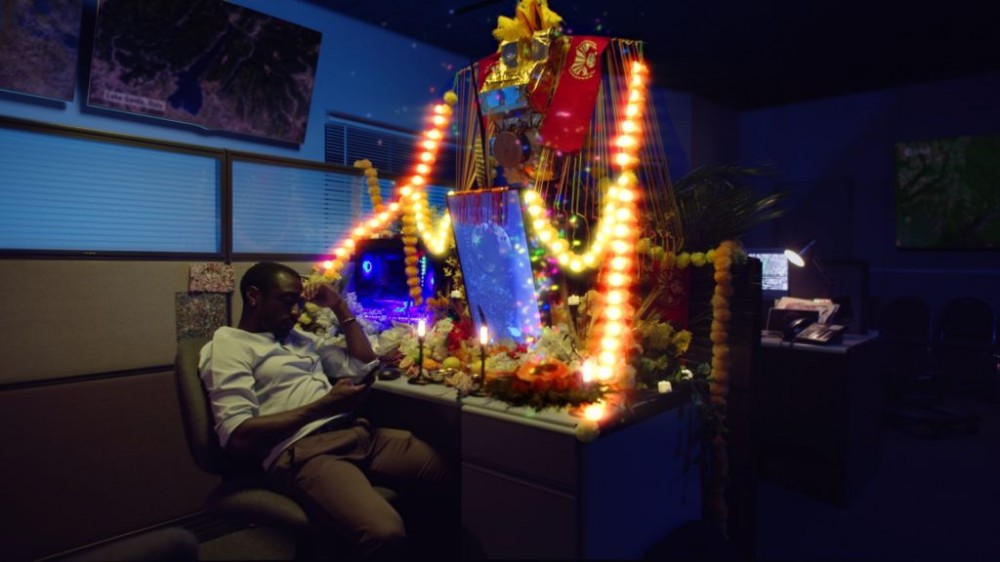
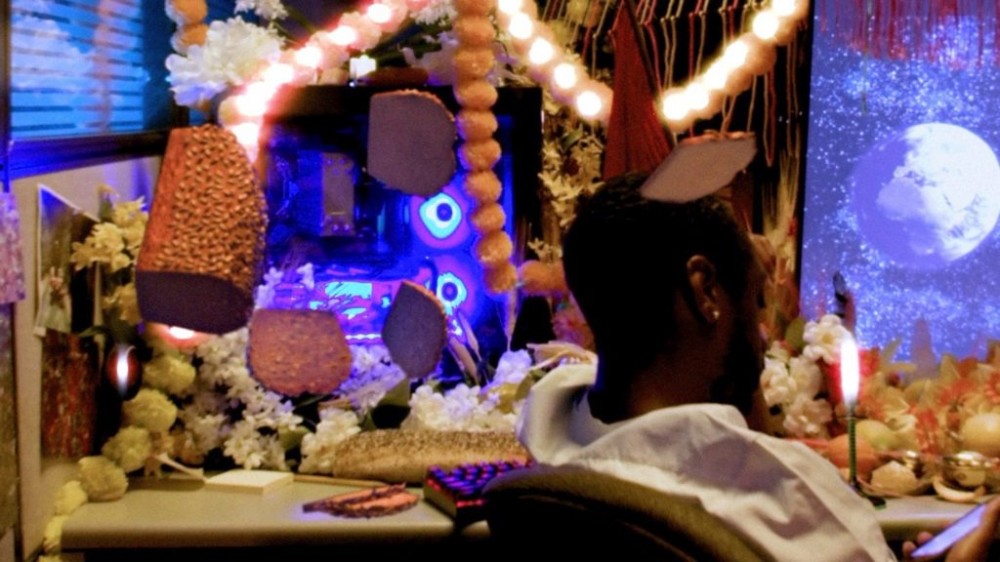
Zooming out to a planetary scale, so far, in fact, that humanity stops looking like the solution to its’ own problems, can be both dizzying and invigorating, qualities it shares with the kinds of immersive science fiction Miller and the Actual Objects team constantly draw from. In this way, Solstice shares some DNA with the work emerging out of The Terraforming, a postgraduate design research program, directed by Benjamin Bratton and Nicolay Boyadjiev at the Strelka Institute in Moscow, Russia. Recontextualizing terraforming out of a sci-fi setting, both in terms of how the urbanisation of planet earth can be considered its own kind of terraforming and the urgent structural and computational planning that will be required to keep the planet capable of bearing the life that was born on it, the program is a space for researchers to engage in the kind of multidisciplinary, systems-level thinking Bratton lays out a road map for in his books The Stack: On Software and Sovereignty and The Revenge of the Real: Politics for a Post-Pandemic World. During the year of research that went into Solstice, Bratton’s work would inform Miller’s approach. “I spoke with Benjamin Bratton innumerable amounts of times through the production project at SCI-Arc,” he explains. “It’s very much informed by the same kind of thought process that goes into The Terraforming because it comes from that same kind of worldview: that we live on a giant computational sphere, that there is no such thing as nature and that our general thrust now is to figure out at what level we want to intervene, or are capable of intervening in, fixing the problems we’ve made for ourselves, and by extension every other species on the planet.” Another person whose thinking would shape Actual Objects’ approach to the making of Solstice was architect Liam Young, the founder of the program many of the members of the studio attended at the Southern California Institute of Architecture and in whose classes Solstice was partially worked on. As a core faculty member of the Strelka Institute and the director of the MS Fiction and Entertainment program at SCI-Arc, Young very much facilitated the conception of Solstice, providing Miller the tools and resources to order his research into this speculative documentary.
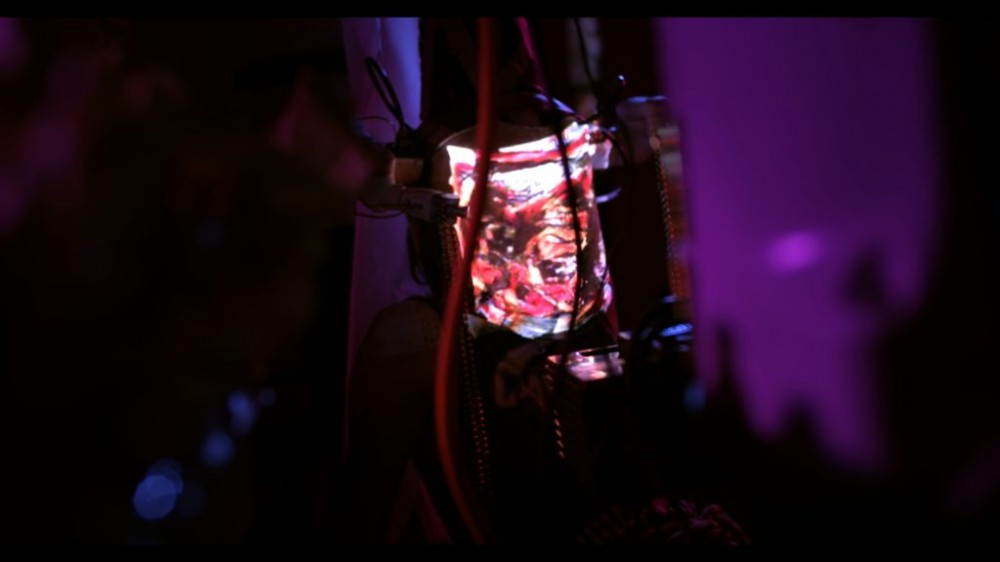
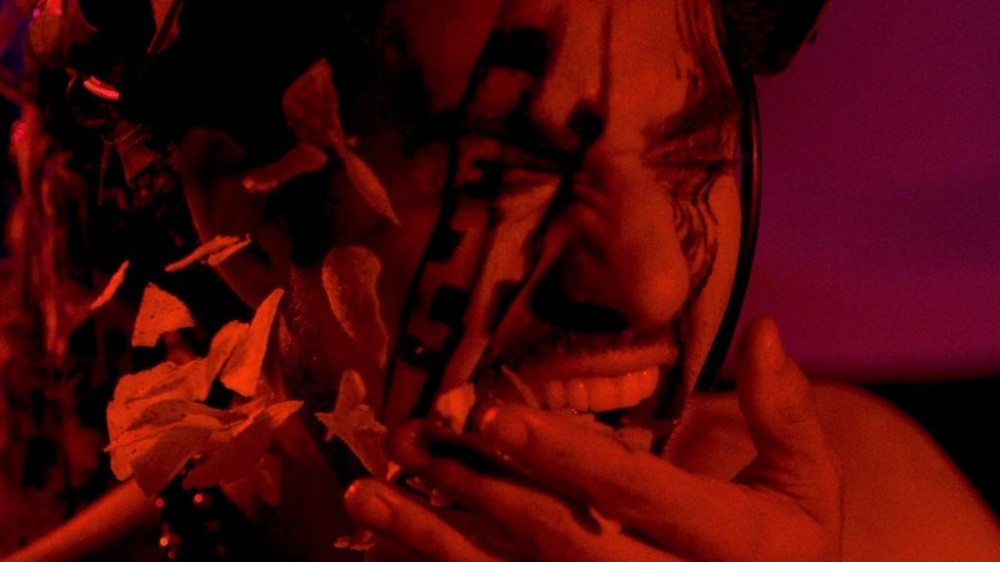
It’s this synthesis of computational philosophy and an aesthetic approach that privileges the primacy of objects, both physical and digital, that is the central drive of Actual Objects’ theoretical practice. “Technology in general is tied into this larger production line that is fully integrated with natural cycles,” says Rick. “One of the things Actual Objects wants to address is looking at redefining nature. This computer is just as natural as a tree, for example, because it comes from all the same materials, it’s all living in the same world. Creating that difference and understanding that digital things can be natural or that technology can be natural, that the city can be understood as a part of nature, helps us to wrap our head around these large issues, or as Timothy Morton would call them, hyper objects, such as climate change and things of that nature.” It’s by dissolving the dichotomy of humanity and nature and instead understanding each as a series of infinitely complex interconnected systems that we can understand that automated agriculture develops at the same time as agricultural ritual. Traditional farming techniques and culture may transition into more modern practices, but their cultural significance abides. Miller puts it another way: “The way we bring these technologies into our sense of knowing is to incorporate them into our ritual practice. Is the fact that it’s brisket at the Seder dinner the important thing, or is the fact that we gather around it to consume calories in this ritual manner the important thing? What happens if we swap them out? I don’t know the answer to that, Solstice just posits a speculation about what might happen, and who might benefit and who might not. I think it’s an interesting question, one that we’re probably going to have to answer.”
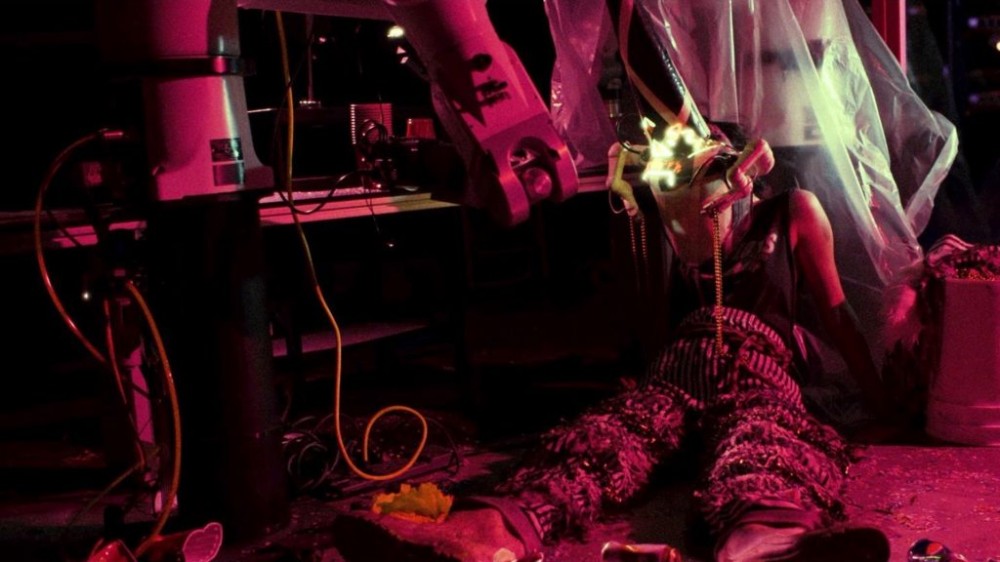
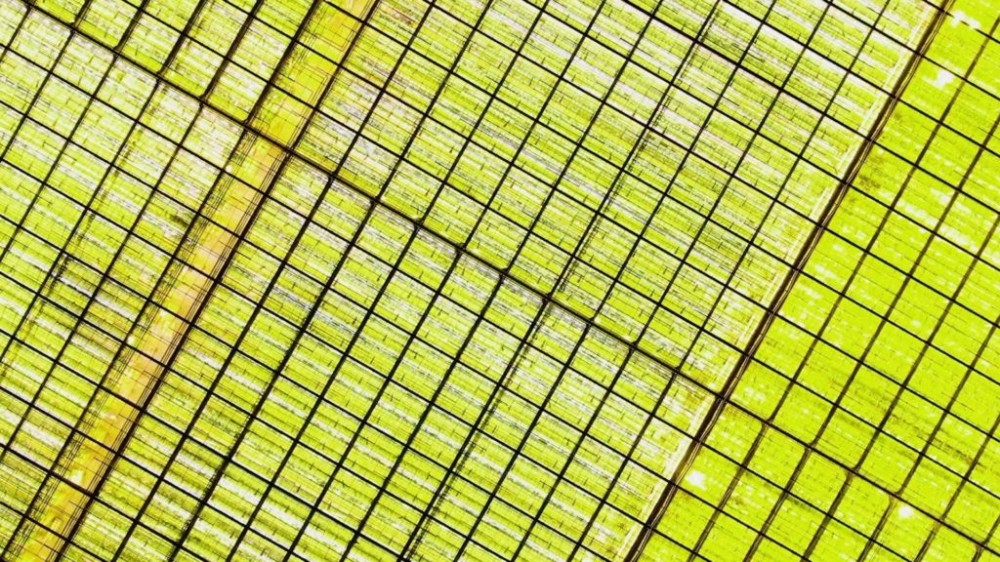
Ultimately, though the sounds and images in the film could be interpreted by some as dystopic, Miller contends that Solstice is an inherently optimistic piece. “I think the point is that it persists,” he says. “These rituals are essentially a sense-making technology in and of themselves. You take the unknown, you input it through a ritual, it comes out as a known, it now sits inside our cosmology. Through ritual practice, regardless of what happens, we will continue to persist and make sense of a world as it changes and that will help us to adapt. Mitigation is not the solution, adaption is the solution.” The film’s laser-eyed focus on the kind of world it is possible to build, much like the planetary thinking of The Terraforming, highlights the spaces in which the human spirit rises out of the machine, gesturing towards the potential humanity has for using automation and machine learning to find a sustainable way to live. It’s this kind of world, in which computers, trees and genome sequencers are all understood as forms of natural technology, that Actual Objects is interested in building, too.
For more information about Actual Objects you can visit the studio website and follow the studio on Instagram.
Solstice Credits:
Director – Case Miller
Producer – Liam Young & Actual Objects
Editor – Rick & Claire Farin
Music & Sound Design – Rick Farin & Theo Karon
Narrator – Masha Tckachenko, Elaine Kim
Translations – Julai Marfin, Juan Rincon, Nicholas Stephan
Graphics – Jasper Wong
‘Solstice’
Director of Photography – Amanda Ochs
Research Consultant – Duke Pauli, University of Arizona
Special Thanks – University of Arizona, Terra-Ref Project
‘Asado’
Starring – Pedro Ferrazini
Costume Design – Macarena Sanchez
Research Consultant – Sean Raspet (NONFOOD), Macarena Sanchez
Special Thanks – Bernd Fruhberger, UC San Diego, NANO3 Laboratory
‘Mayday’
Starring – Jeremy Hartley & Cole Daly
Altar Design – Georgianna Chiang
Altar Animation – Emma Berliner
Director of Photography – Noah Deats
Research Consultant – Jan Padios
‘Ash Wednesday’
Starring – Mishel Prada & Teo Lynch
Costume Design – Kate McNee, Macarena Sanchez, Lena Pozdnykova
Robot Choreography – Curime Batliner
Director of Photography – Noah Deats
Research Consultant – Sonia Lo, CROP ONE
Special Thanks – Alexey Martin, Macarena Sanchez, Benjamin Bratton, Ben West, Alex O’Flynn, Jessie Hill, Juan Rincon, Pedro Ferrazini, Jeremy Hartley
Made With Support From – Southern California Institute of Architecture, Alfred P. Sloan Foundation, Fact

